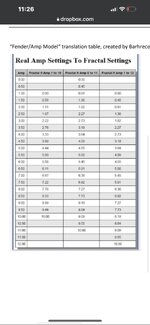scottosan
Well-known member
Just ordered new today. I have no idea where to even begin with this, but my intent is to use this for more polished and consistent pickup recordings. I am a little scared of how much work will be needed to dial in the tones I need based on my previous experience with modellers and profilers.
I always expect stock patches to be either be way over the top or just unconvincing, but the sounds people are putting out are undeniably good. But, can those tone be had with minimal recording experience?
1. How interchangeable are the patches between the hardware versions?
2. Can I get decent patches without investing a bunch in 3 party patches.
3. Can patches be exported freely between individuals.
Any suggestions as to how I can best acclimate to being a first time Fractal owner would be much appreciated.
I always expect stock patches to be either be way over the top or just unconvincing, but the sounds people are putting out are undeniably good. But, can those tone be had with minimal recording experience?
1. How interchangeable are the patches between the hardware versions?
2. Can I get decent patches without investing a bunch in 3 party patches.
3. Can patches be exported freely between individuals.
Any suggestions as to how I can best acclimate to being a first time Fractal owner would be much appreciated.
Last edited:

